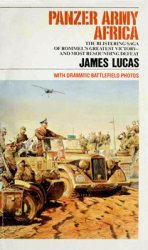The Miami must have danced the Scalp Dance on the night of November 2, 1791, after one of the greatest Indian victories in American history—St. Clair’s Defeat—during what is known as the Miami War (or Little Turtle’s War) of 1790-94.
Before this first of the wars for the Old Northwest between the young United States and various Indian tribes, the Miami supported the French against the English and the IROQUOIS (haudenosaunee), in the French and Indian wars from 1689 to 1763. They continued the fight against the English in Pontiac’s Rebellion of 1763. In the American Revolution from 1775 to 1783, the Miami supported their old enemies, the British, against the American rebels.
And then in the 1790s, with one of their own tribesmen, Little Turtle (Michikinikwa), as general in chief of all the warriors—including CHIPPEWA (ojibway), OTTAWA, POTAWATOMI, LENNI LENAPE (DELAWARE), SHAWNEE, and ILLINOIS—the Miami fought the Americans once again.
Little Turtle was one of the great military geniuses of all time. Although a great orator, he was not as famous a personality as other great Indian leaders of his age, such as the Ottawa Pontiac, the MOHAWK joseph Brant, and the Shawnee Tecumseh. Yet he rates with the great generals from all over the world, having helped develop many methods of guerrilla warfare that modern armies now use, especially decoy techniques.
Little Turtle’s War really started just after the American Revolution. With American victory in 1783, more and more settlers began arriving in the region and settling on Indian lands. The Indians responded with many raids. It is estimated that the Indians killed 1,500 settlers from 1783 to 1790. In 1790, President George Washington ordered an army into the field under General Josiah Harmar, with militiamen from Pennsylvania, Virginia, and Kentucky making up the large force.
The army organized at Fort Washington (present-day Cincinnati, Ohio). When they set out in the fall toward the many Indian villages along the Maumee River, which feeds Lake Erie, the militiamen were cocky. Many of these same men had helped defeat the British in the Revolution.
Miami warclub in the “gunstock” style
The soldiers underestimated their enemy. Little Turtle used swift, small strikes to confuse the enemy. He told his warriors, after an ambush, even without any losses, to retreat into the wilderness. He also had them burn some of their own villages to make the retreat convincing. When the exhausted soldiers were far from a supply base, Little Turtle launched two big attacks and routed Harmar’s army, inflicting more than 200 casualties.
General Arthur St. Clair was given the new command. In the fall of 1791, under President Washington’s orders, St. Clair mustered an even larger force at Fort Washington. And on the way toward the Maumee River, he built new bases for added security—Fort Hamilton and Fort Jefferson. But in the end he fared even worse against Little Turtle. Warriors surprised St. Clair and his men on the upper Wabash River, killing many, then retreated into the forest. The soldiers fell for the ploy and split up into groups. Those who chased the Indians were picked off. Then warriors surrounded the remaining force and pressed the attack. After three hours of fighting, when the count was taken, there were only a few Indian casualties. But St. Clair’s force had 900 casualties—about 600 dead and 300 wounded. It was an enormous victory for the united tribes.
Washington ordered a third army out, this one 3,000 strong under General “Mad” Anthony Wayne, a Revolutionary War hero. Wayne took two years to organize and train this force before sending it into battle. His men built new, better-equipped forts—Fort Greenville and Fort Recovery. Little Turtle’s warriors attacked Fort Recovery but were repelled.
Little Turtle recognized the inevitable. Wayne had built a huge, disciplined force. Whites would keep coming no matter how many armies the Indians defeated. Hoping to save Indian lives, Little Turtle counseled peace. But many of the still-angry warriors wanted war. They voted to have a new leader, Turkey Foot. It was their turn to be overconfident after the two earlier victories.
In 1794, Wayne’s army advanced cautiously into Indian country. The Indians retreated. This time, without Little Turtle, they were disorganized, and Wayne used the element of surprise to his advantage. In the Battle of Fallen Timbers, the Indians lost hundreds of men, including Turkey Foot, and Wayne’s force lost only a few.
A year later, in August 1795, many of the chiefs of the allied tribes, including Little Turtle, signed the Treaty of Fort Greenville. The Indians ceded much of their territory to government officials—all of Ohio and most of Indiana. In exchange they were guaranteed other lands farther west, lands that would soon be under siege.
Little Turtle never fought again. He became a celebrity among non-Indians, traveling widely and meeting many famous people. But he died of a disease he developed as a result of living among whites—gout.




 World History
World History









